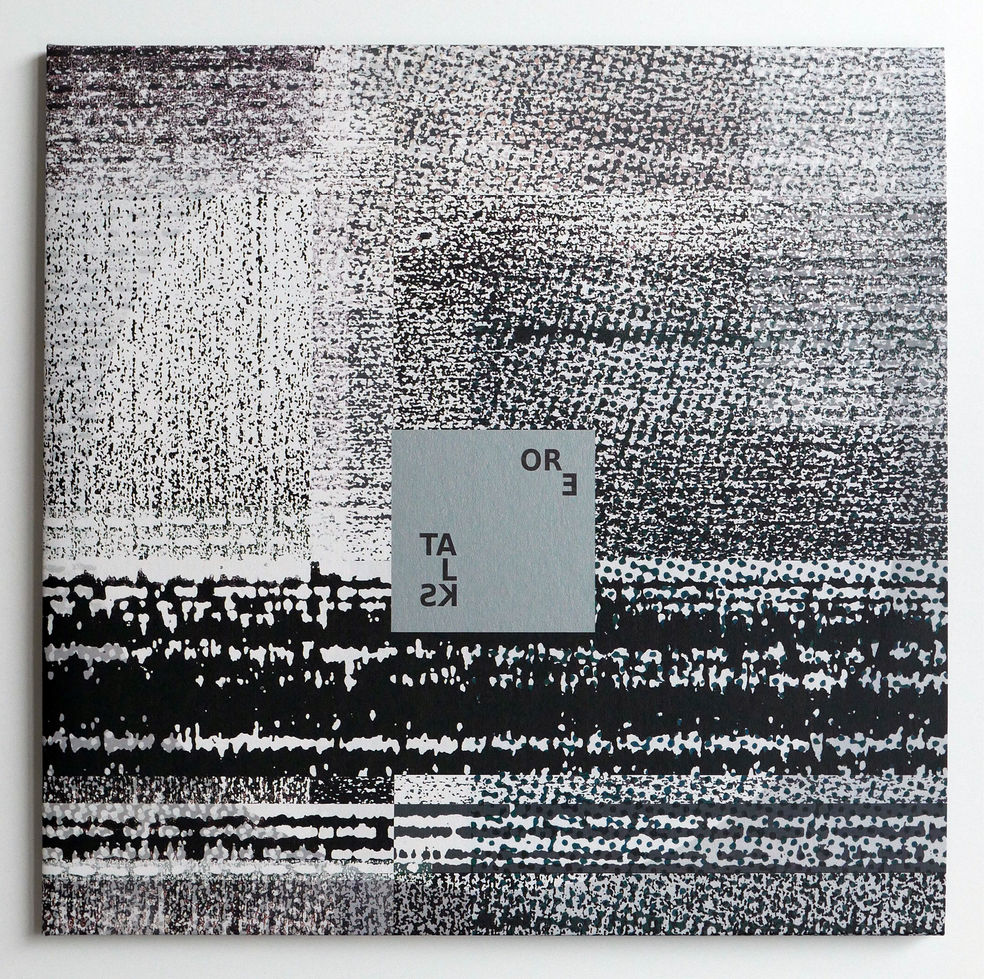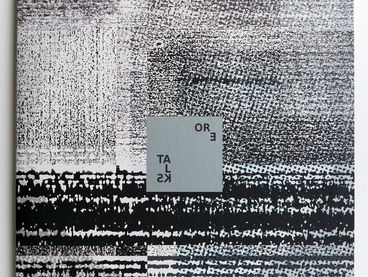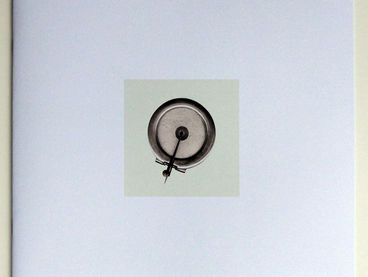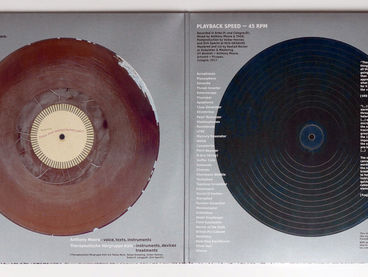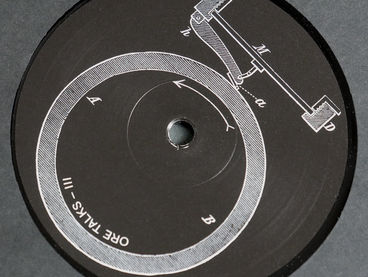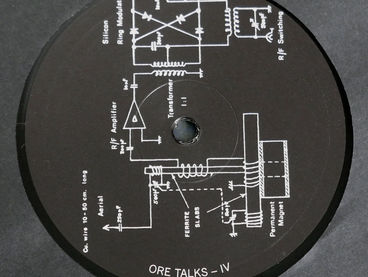ORE TALKS – Anthony Moore & Therapeutische Hörgruppe Köln
Ore Talks (2x Vinyl + 20 Pages Booklet)
Four sides of vinyl: this has served as a time constraint from the very outset of the project. With around 18 minutes per side giving an overall run time of 72 minutes, these time slots are designed to offer recordings of four sets of historical, technical processes and their devices. Each of the four chapters is conceived in two parts and realised in a number of actual compositions.
A. VALVES / ROEHRE:
1. Their Electrons. The developement of De Forest‘s Audion.
2. Noise as signal and the power of redundancy.
B. PIEZOS:
1. Reversibility; Loudspeakers as Microphones and The Transmitting Ear.
2. Mercury Acoustic Delays Lines.
C. RECORDERS:
1. Wax Cylinders, Hill ’n Dale, Voices of the Dead.
2. Magnetic Oxide and Memory Machines, Storing Time.
D. CRYSTAL SETS:
1. Waves; The Air as One Vast (negentropic) Library.
2. Farewell to AM, Fades to Infinity.
A voice is transmitted through various materials; early microphones, the reproducer of an Edison phonograph, glass phials filled with mercury, piezo crystals, transducers, and piezo discs attached to polystyrene spheres, shortwave radios, old russian valves and the self-built circuitry of condensers and switches. What emerges are speech-driven patterns of noise, electronic music and occasional passages where the voice can be plainly heard in 14 separate pieces of widely differing durations.
ORE THOUGHTS
Galena to Stibnite, starting with lead, ending with lead; the history of soldering, cementing connections for currents of information and noise alike. In the undigital realm, noise is a context for the signal and can be information in itself. For example rotating surface noise is useful for finding the original speed at which early shellacs may have been cut. Redundancy is vital for a proper understanding of the world. So Ore Talks celebrates lead and soldering and making connections and, endotically, noise; noises at the outer ear but also of the inner ear. Perec and the Oulipians employ the term ‚endotic‘ as an antonym to ‚exotic‘ in order to focus attention on the everyday, on what might be dismissed as mere noise. The infraordinaire, as Perec calls it, is very much the subject of a historiographical approach that prefers to explore the lives and times of the distinctly unfamous; a more vivid, sensory history that concerns itself with sights and smells and sounds.
In addition, Ore Talks posits a strange attraction between the discoverer and the yet-to-be discovered; between buried artefacts and the archeologist seeking to disinter them; between prospector and rich, subterranean lodes. The ‚ground‘ in the electrical field is a conductor that reaches into the earth. Simultaneously, metalliferous ores and objects alike call out to be uncovered in an equivalent act of active perception. The only prerequisite? Keep an ear to the ground; the telluric source for chthonic voices.
Murmurings from below the surface: the call of buried things that seek to be disinterred. Anthropomorphism notwithstanding, there is something to be said for giving a voice to inanimate minerals. After all, their constituent elements come from the stars and have also given rise to us humans. Furthermore, when those same elements are alchemically transformed into compounds of metal and fillers of plastics, of quicksilver and piezo crystals, of the very air, water or copper that play host to sound in its various forms, transporting speech, then ORE TALKS emerges as a title with some resonance.
And text too can be a ground from beneath which conceptual objects stem (voices in the grey matter). Here is a list of such objects that have been disinterred in no particular order from the paragraphs above. “Active perception; superluminality in the collapse of the sender/receiver paradigm”
“A History of Simultaneity; how far back does same-timedness go?”
“Noise in History, noise as history”
“The importance of redundancy in human communication”
“Sound and the continuum are products of each other”
“What holds true for time also applies to sound; they both depend on disappearing as they come into existence.”
“The speed of sound is a good rate at which to think about a speed of time” These and related topics are expanded over the following pages. They contain the sources for all readings recorded and subsequently transformed in the ORE TALKS experiments on this double LP.



